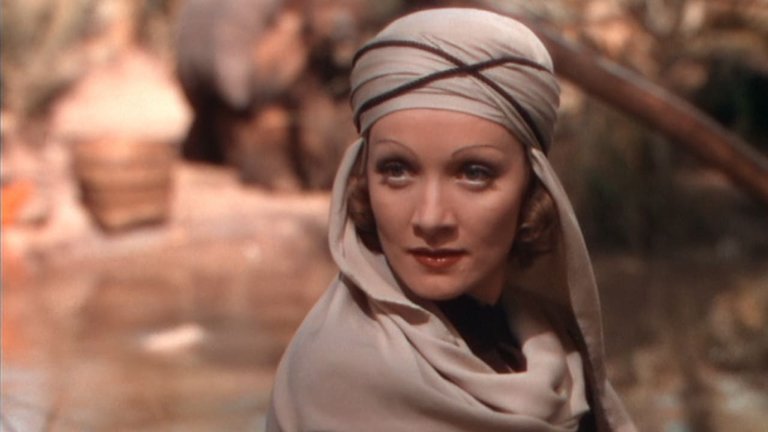Film Review: The Garden of Allah (1936)

In 1930, Marlene Dietrich became a Hollywood icon with her starring role in the romantic melodrama Morocco, set in the exotic desert locales of North Africa. Six years later, famed producer David O. Selznick believed he could repeat this success by employing the same formula and adding another seemingly irresistible ingredient: the new color technology of Technicolor. The result was The Garden of Allah.
The film was based on the 1902 novel by British author Robert S. Hichens, which had been very popular and adapted twice before in the silent era – in 1912 and 1927. The plot begins when Domini Enfilden (played by Dietrich), feeling lonely after the death of her father, returns to the convent when she was educated in order to seek spiritual guidance. Mother Superior suggests that she tries to find herself in solitude of Sahara Desert. She follows the advice and arrives in desert town where, among some colourful characters, she would find Boris Androvski (played by Charles Boyeur), mysterious but attractive man who has some very personal, albeit different reasons to come to the desert. Shortly before that a monk has abandoned Trappist monastery in Tunisia.
Directed by Richard Boleslawski, a Polish filmmaker with a brief but prolific career in American cinema before his sudden death at age 47, The Garden of Allah showcases a steady hand and puts not only a large budget, but also the new Technicolor technology, to good use. The result is a film that looks gorgeous thanks to the cinematography of Virgil Miller, and sounds well thanks to the effective music of Max Steiner. The exotic costumes, sets, and props are well-matched with the desert locations in California that stand in for the Sahara.
However, it is quite a different matter when it comes to the cast, at least those in the main roles. Marlene Dietrich, despite her glamorous look, fails to recapture the chemistry she had with Gary Cooper in Morocco. Charles Boyer, as the tortured and theatrical Androvski, is hardly the kind of man one would imagine a woman falling in love with. The supporting players, such as the authoritative Basil Rathbone as Count Anteoni and the effective comic relief of Joseph Schildkraut as the native guide Bartouch, fare better.
An even bigger problem for The Garden of Allah is the script, which is reflected in the unusually short running time for what was supposed to be an ambitious epic melodrama. The romance between the two main characters seems rushed, and the audience soon becomes aware that not much of importance actually happens in the film. The reason for the poor script might be the same that made the scene in which the famed Austrian dancer Tilly Losch performs as the exotic entertainer Irena look incredibly chaste and unerotic, even for 1930s standards. It is the producer's and scriptwriter's effort to not only conform to the oppressive and harsh censorship standards of the Hays Code, but also to avoid any criticism from the Catholic Church. As a result, Hichens' literary source, despite hardly being anti-Catholic and actually advocating a virtuous life of religious devotion as opposed to enjoying worldly pleasures, was heavily "bowdlerized." Consequently, The Garden of Allah often looks more like a sermon than an escapist melodrama.
The audience, who had wanted something to make them forget the ongoing hardships of the Great Depression, came to the same conclusion, and The Garden of Allah flopped. The only consolation was a special Oscar for Color Cinematography, which wasn't such a hard achievement, considering it was only the fifth film made in three-strip Technicolor.
Selznick, however, wasn't deterred by this failure and continued to make films in the expensive and technically demanding Technicolor. His persistence was rewarded with the triumph of Gone with the Wind three years later, a film that truly showcased the potential of the new color technology and captivated audiences.
RATING: 5/10 (++)
Blog in Croatian https://draxblog.com
Blog in English https://draxreview.wordpress.com/
InLeo blog https://inleo.io/@drax.leo
Hiveonboard: https://hiveonboard.com?ref=drax
Rising Star game: https://www.risingstargame.com?referrer=drax
1Inch: https://1inch.exchange/#/r/0x83823d8CCB74F828148258BB4457642124b1328e
BTC donations: 1EWxiMiP6iiG9rger3NuUSd6HByaxQWafG
ETH donations: 0xB305F144323b99e6f8b1d66f5D7DE78B498C32A7
BCH donations: qpvxw0jax79lhmvlgcldkzpqanf03r9cjv8y6gtmk9
Posted using CineTV